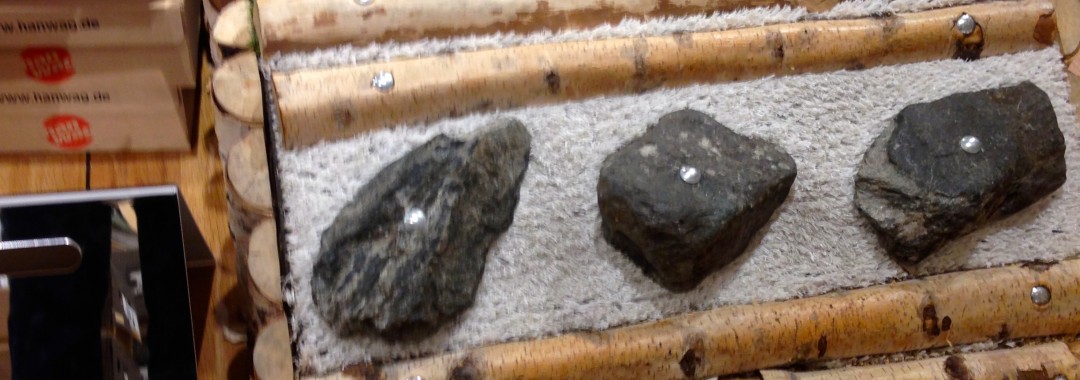(The English text is after the Finnish one)
Verkkokauppa haastaa fyysisen kaupan. Tämä ei liene kenellekään mikään uutinen, mutta minusta on kummallista, miten vähän fyysinen kauppa on muuttunut verkkokaupan kasvun myötä. Voisi kuvitella että 3D-kauppa – siis fyysinen kauppa – haastaa 2D-kaupan – verkkokaupan – tuomalla fyysisessä ympäristössään esille tuotteista sellaisia asioita, joita ei verkkokauppa toistaiseksi voi vielä esitellä. Mutta kun käyn vaikkapa isossa hypermarketissa, se näyttää edelleen valtavalta varastolta, jossa on hyllyillä vieri vieressä tuotteita, kuten varastossa, mutta kuluttajapakkauksissa. Esillepanojakin ohjaavat tilankäytön tehokkuutta tavoittelevat algoritmit, siksi kauppa näyttää enemmän varastolta kuin kaupalta.
Muotikauppa on onneksi ajatellut asiaa pidemmälle. Siellä on jo kauan aikaa toteutettu esillepanoja, joissa tuotteiden käyttöä näytetään, jos ei oikean ihmisen, niin ainakin mallinuken päällä. Muutoinkin muotikaupan esillepanot ja ympäristö rakentavat asiakkaalle emootiota ja inspiraatiota. Tämä näkyy tietenkin myös Ikeassa. Ikeassa varasto on se paikka, josta tuotteet haetaan ja myymälässä tuotteet näytetään käyttökunnossa. Huonekalukaupassa esillepanot ovat yleensä aina rakennettu siten, että tuotteet näytetään käyttökunnossa ja toimitus tulee sitten suoraan asiakkaan kotiin varastosta. Kehitystä on toki muillakin kaupan aloilla, vaikkapa kodin elektroniikassa, jossa Megastore –luokan kaupoissa tuotteet ovat esillä käyttökunnossa.
Mutta riittääkö pelkästään käyttökunto? Eikö fyysisen kaupan tulisi tuoda tuotteista esille muitakin asioita, joihin verkkokauppa ei vielä taivu. Esimerkiksi tuoksuja tai pintamateriaalin tuntemusta ei verkkokauppa vielä mahdollista. Ja ehkä kaikkein tärkeimpänä asiana fyysisessä kaupassa pitäisi tuoda esille se tunne-elämys, joka tuotteeseen liittyy. Ajatelkaapa vaikka autokauppoja. Se tunne kun istut uudessa autossa sisällä, tunnet uuden auton tuoksun ja rakennat mielikuvaasi autolla ajamisesta. Tai pohtikaapa sitä, että olette aloittamassa uuden urheiluharrastuksen ja hankitte siihen sopivia varusteita. Se tunne kun pääsee kokeilemaan tuotteita ja ehkä jopa oikeaan ympäristöön – se on jotain sellaista, jota verkkokaupan on vaikea tarjota.
Kaikkia tuotteita ei tietenkään voi laittaa elämyksellisiin ja kauniisti somistettuihin esillepanoihin, pitäähän tuotteita myydäkin. Mutta kyllä kivijalkakauppa voisi tehdä valtavasti sen eteen, että tuotteet käyttökunnossa voisivat tuoda esille niiden ominaisuuksia. Tästä mainio ja simppeli esimerkki on Partioaitan myymälöissä oleva maastokenkien ”testirata”. Toteutus on edullinen, mutta oivaltavasti tuotteiden testauksen mahdollistava. Samaa ideologiaa toteuttavat suuressa mittakaavassa amerikkalaiset Great Outdoors ja Cabela’s –konseptit. Niiden suurimmissa myymälöissä pääsee testaamaan jopa koskenlaskua.
Mutta milloin saamme ruokakauppoihin elämyksellisiä esillepanoja? Milloin sinne saadaan koekeittiö, jossa asiakkaille opetetaan ruoanlaittoa? Milloin rautakauppoihin tulee kokeilutila – LAB – jossa asiakkaille opetetaan moottorisahan käyttöä, lattianlaatoitusta tai vaikka maalausta.
Nyt on korkea aika tuoda esille 3D-kaupan vahvuudet, ennen kuin ne toteutetaan netissä. 2D-kokemuksia nettikaupat jo tarjoavatkin, myös videona.
Store or storage?
Web-store is challenging the conventional store. This is not a new issue anymore, but just for that reason I wonder, how little the conventional store has changed along web-store’s heavy growth. One should imagine that 3D-store – brick-and-mortar store – would challenge 2D-store – web-store – by presenting the products in that way, that is not possible for the web-store. But when I visit some large hypermarket, it still looks like a giant warehouse that has products displayed in shelves, just like in the storages, but in consumer packages. Since the algorithms handle the space management, the store really looks more like warehouse than a store.
Fashion stores have though more about this. They have executed for ages lovely merchandizing, where the products are shown – if not on a real person – at least on mannequins. In general the displays and ambience of fashion stores create emotion and inspiration. Of course the icon of all concepts, IKEA, has got it too. In IKEA the storage is the place, where the products are picked up, but in the store the products are mainly shown in that condition, in which they are used. The same of course is common in the furniture stores – the products are displayed live and they are delivered to the customer from the warehouse. This is nowadays also quite popular in home electronic stores, where at least the Megastores show the products fully live.
But it is enough to have the products in working order? Shouldn’t the physical store do more to create inspiration and emotion? For example scents or feeling the surface patterns of the products are not yet possible for web-stores. And maybe the most important issue is to create that feeling for the customer, that is the key of the product. Think about car retail. The feeling you have, when you sit inside a brand new car, that is a little bit too expensive for you, that smells like brand new – doesn’t it create a strong desire for buying that car. The same is compatible for many other products too, for example when you have started a new sport, the most important thing is to buy good equipment. Trying and testing those creates the feeling that you already are a pro. These are experiences that web-store cannot offer, so why conventional stores do not utilize them more, I wonder.
It is clear that not products can be displayed in experimental and nicely decorated displays – people should be able to buy those too. But I am sure that brick-and-mortar stores can do much more to present the products in that manner that creates the urge to own those products. A very simple but lovey example is the test-track for trekking shoes that Partioaitta (local outdoor store) has. It is cheap to make, but creates the feeling when walking in real path. Same ideas but in grand scale have the US-based concept stores, like Great Outdoors and Cabela’s. In their biggest stores you can even test rafting in a real look-alike environment.
But when we see more experiental displays in food stores? When they have a test kitchen, where they teach customers to cook? When the DIY –stores will have a test area, where customers can learn using chainsaw or making a tile floor?
Now it is high time for creating those experiences, before they do it in the web. 2D-experiences the web-stores offer already, including live videos.
